Langtang Trek difficulty, itineraries and tips for short and easy trek
With an area of 1,710 sq km, the Langtang national park is the second largest national park in Nepal. It expands from close proximity of Kathmandu to the Tibet border in the north making it culturally and geologically diverse. While its subtropical valley basins are only about 1000 m, snow peaks of Langtang ranges rise to 7,234 m within short distances. The vertically rising landscape also hosts a wide variety of flora and many endangered species of fauna.
Easy to strenuous trekking routes in Langtang
Langtang has several trekking routes lasting from 3 days to two weeks with easy to strenuous in difficulty. With the extension of the road, a short trek in the Helmbu area of Langtang National park could be done within 3 days from Kathmandu. The famous trek to Kyanjin Gompa is considered a relatively easy one week trek in Nepal. Longer two weeks trek crosses the Gosaikunda Pass to Helambu from the Langtang valley. For those looking for more adventures, climbing Yala peak or crossing to Helambu over Tilman Pass or Ganja La Pass are thrilling options.
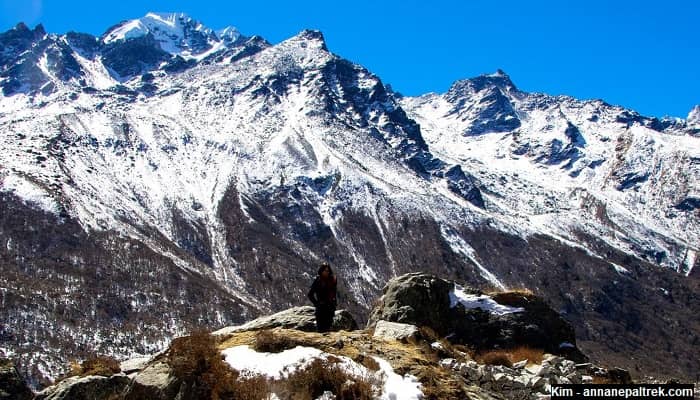
Easy Trek in Langtang
A week's trek to Kyanjin Gompa is famous as an easy trek in Nepal. Unlike similar length of trek in Everest and Annapurna, the Langtang trek route follows the valley basin of Langtang River gradually climbing to alpine meadows. The ascend is from 1,470 m to 3,800 m only in three days allowing people enough time to acclimatize.
Check out this short and scenic trek from Kathmandu. Ama Yangri Peak is a sacred peak in Helambu region of Langtang national park.
Langtang Heli Trek
Since the national park is close to Kathmandu, Langtang valley is also popular as Heli trek destinations. A short helicopter flight will take trekkers to the scenic highland of Langtang. From there, a short and easy trek could be customized to Kyanjin Gompa (3,800 m). Trekkers can climb some peaks or explore the far end of the Langtang valley before flying back to Kathmandu.
Difficult Trek in Langtang
The Langtang valley trek combined with Gosaikunda Lake and crossing to Helambu make this trek moderate to difficult in grade.
Strenuous Trek in Langtang
Langtang National Park offers a range of adventurous and rewarding options of adventures for both novice and experienced climbers. Yala Peak is one of the famous trekking peaks in Langtang. With camping arrangements, trekkers can also cross to Helambu over Ganja La pass and Tilman Pass.
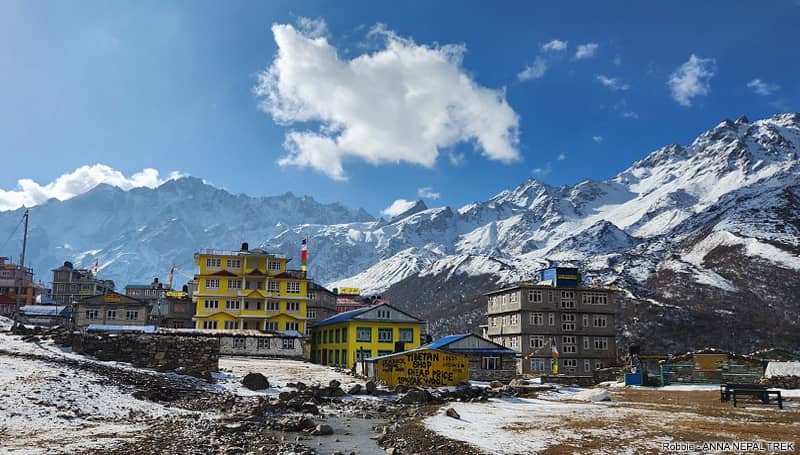
Short Langtang trek can be done in 3 - 5 days
Langtang is the closest Himalayan trekking region from Kathmandu, the capital of Nepal. The trek to Kuanjin Gompa could be customized within 5 days from Kathmandu and back. Since the road to trail head is getting better and shorter each year, it is possible to start trekking on the same day we drive to Syabrubesi and again drive back on the afternoon we walk back down to trail head.
Similarly Langtang is the most scenic alpine valley with moderate altitude and easy walks for shot Heli trek from Kathmandu. A helicopter drops trekkers at the altitude of 2,950 m, from where the trail climbs gradually to 3,800 m in couple of days. Well acclimatized and fit trekkers can climb to Kyanjin Ri or Tserko Ri before being airlifted by helicopter of the third day.
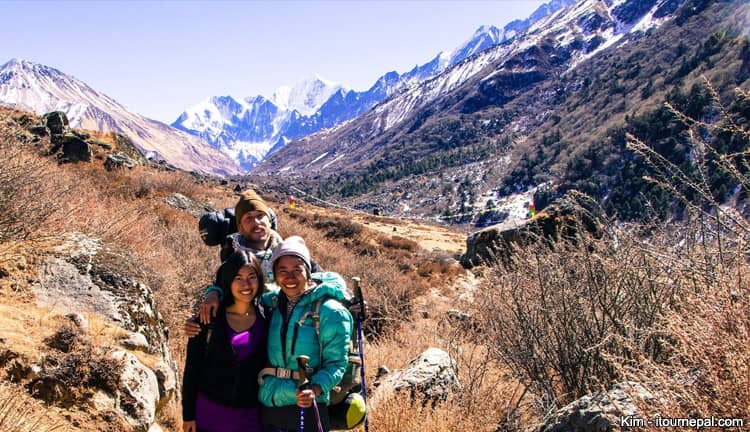
How difficult is the Langtang Trek ?
Langtang trek is one of the easy yet scenic trek in the Himalayas of Nepal. Other trek routes with similar amount of time either are at higher altitude or have more tedious ascends and descends in foothills even before entering the Himalayan valleys. The easy access from the capital Kathmandu also make it more convenient. Since the trek ranges within the moderate, habitable altitude, weather is also more predictable. Also relatively fewer trekkers visit the Langtang national park making it easy with accommodation and unlike Annapurna and Everest.
Langtang Trek difficulty
Each day walking is about 10 km which takes about 6 hours. Trail mostly menders along the Langtang River but climbs up and down the mountain ledges at times. There are couple of places where trail climbs more steeply for about 400 m stretch.
How is the trail ?
Langtang trekking trail is mostly a pleasant beaten trail passing through vibrant jungle and alpine pastures. But expect sections of uneven stone steps and rugged paths crossing rockery, loose scree or mudslide and fords. Trails may change at some points due to landslide, flooding, avalanches and other factors. Getting the updates with locals, careful planning and preparedness is recommended.
Risk of altitude
Langtang trek starts and dwells in moderate elevation allowing trekkers enough time for acclimatization. We recommend trekkers to follow the standard itinerary which allows enough time to acclimatize before climbing Kyanjin Ri (4,770 m) and Tserko Ri (5,000 m). Some trekkers may experience headache, nausea, fatigue and sleeplessness at Langtang (3,430 m) and Kyanjin Gonpa (3,870 m). These are the symptoms of Acute Mountain Sickness.
Here are the precautions and treatments to consider for prevention of AMS.
- Ascend gradually : Have a rest day after ascending to an altitude of 3,300 m. Ascend only about 300 m in a day above 3,300 m and have another rest day every three days.
- Hydrate yourself : Drink at least 3 liters of water in a day. Avoid caffeine and alcohol as they can dehydrate you.
- Medication : Acetazolamide is a popular medicine to take as prevention of AMS. But use the medicine only if you don't have extra day to rest and allow your body to acclimatize naturally.
Weather related challenges and best time to visit
Extreme and fluctuating weather throughout the year as well as within a trek could create challenges to trekkers. Monsoon rain (June - August) in summer may cause mudslides, flooding and landslides. While some weeks have more rain, other weeks could be good for trekking. Even though it is not the best time, it normally rains in the late afternoon and night in the less rainy weeks allowing trekkers to walk in between.
Winter ( December - February ) is a relatively better time to trek than summer. Last few winters had less snow in the Himalayas with more bright and sunny days with crisp sky for Himalayan view. Number of trekkers also increased in the winter of 2024. However, one needs to be prepared for cold weather and specialized geras with professional and experienced guides and staff in case of snow fall and extreme cold and higher altitude.
Both summer and winter season trekking may face challenges of poor visibility and slippery trails due to heavy clouds and fogs. Again careful planning and preparedness is required.
Best time to do Langtang Trek
The best time to do Langtang trek is from mid October to Mid December and mid February to mid May. The monsoon rain subsides with moderate temperature and crisp sky by September. With few days of rain, September is a shoulder season which encounters fewer trekkers along the trail.
October and November floods the trails with trekkers. Number of trekkers subsides by December but also the temperature drops down. With slightly colder weather, the first half of December continues to have sunny days with crisp sky.Similarly February is also shoulder season with fewer trekkers. It is still cold but most of the days are warm and sunny.
March and April is another best time to do treks in Langtang national park. With may come the pre-monsoon clouds. May days are mixed with warm and sunny days with partially cloudy skies and more rainy late afternoons.
Tips to make Langtang Trek easy
- Regular workout or jogging prior to the trek makes it easy.
- Mid February till mid April and mid October till November are the best time for the trek.
- Stay hydrated. About three liter of water per day is recommend during the trek.
- Stay healthy. Travellers diarrhea, Khumbu cough and altitude sickness are the major threat on the trek.
- Pack wisely with appropriate equipment
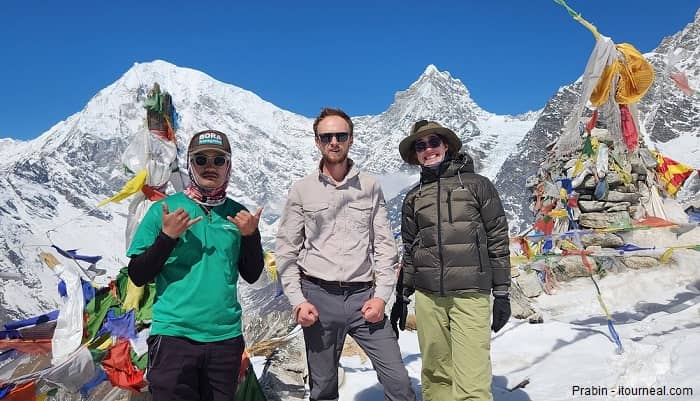
What our clents say

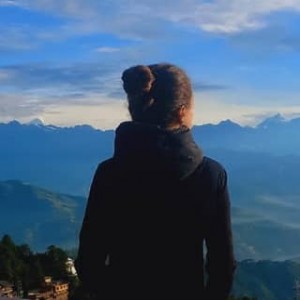
Kathmandu, 5 day's experience !
I came to Nepal from China for 5 days. I decided to stay in Kathmandu. As I am interested in religion, spirituality and nature, I decided to divide my stay…
Read More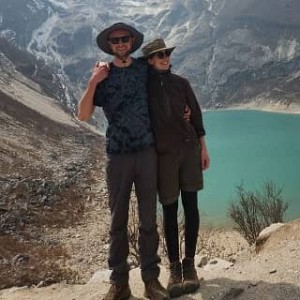
Did it again !
After an incredible trek with them to the Langtang valley in March, they arranged another awe inspiring trek for us to the Manaslu circuit. Rabi created an itinerary that suited…
Read More
Did it again !
After an incredible trek with them to the Langtang valley in March, they arranged another awe inspiring trek for us to the Manaslu circuit. Rabi created an itinerary that suited…
Read More
Did it again !
After an incredible trek with them to the Langtang valley in March, they arranged another awe inspiring trek for us to the Manaslu circuit. Rabi created an itinerary that suited…
Read More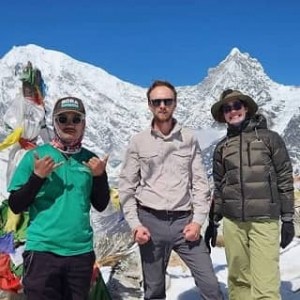
Brilliant Team fantastic trek
Rabi and Prabin provided a fantastic service at great value.
We spent 10 days with Prabin as our guide and we couldn't have been happier - he was professional, knowledgeable…
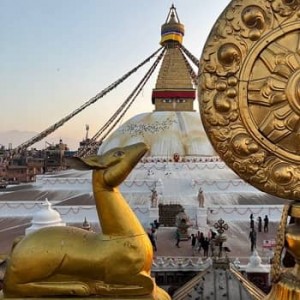
First time in Nepal but hopefully not my last !
Rabi arranged a number of one day short treks for me and a two day tour of Kathmandu. These were either led by Rabi or Prabin. Both are excellent, experienced…
Read More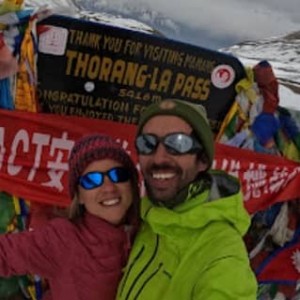
Great Adventure | Professional service
Last month we had the greatest experience of being amazed by the Annapurna circuit. We took the tour w Rabi and his hospitality was outstanding. He organised for us the…
Read More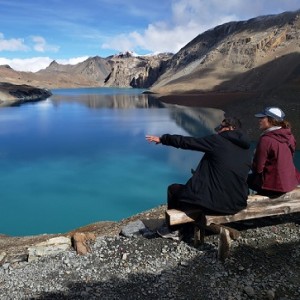
An unforgetable Adventure
My partner and I did a customized 15-day itinerary of the Annapurna Circuit with iTour Nepal and it was one of the best trips of our lives! Rabi was extremely…
Read More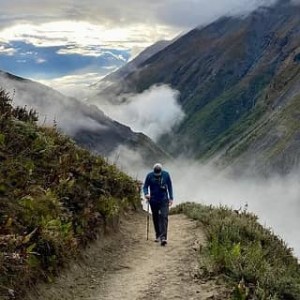
An unforgetable Adventure
My partner and I did a customized 15-day itinerary of the Annapurna Circuit with iTour Nepal and it was one of the best trips of our lives! Rabi was extremely…
Read More
A great Service !
Rabi led our 7 day tour from Kathmandu to Pokhara to Chitwan National Park and back to Kathmandu. He was very responsive during our booking process, super helpful in setting…
Read More
I will be back !
amazing view..good leader, good organizer..recommended executor of the Annapurna Basecamp tour....I will be back on a trip to Nepal by using i tour Nepal again
Read More
Excellent!
It is my second experience with iTourNepal and, as last year, it was EXCELLENT!
iTourNepal is truly an eco and socially responsible tour company focusing on sustainability.
The team is…
Read More
Nepal Bhutan 15 days Tour
Rabi is a fantastic organiser. We had several moving dates during planning, including a major mid-tour reshuffle to include a helicopter trip to Everest Base Camp. We didn't miss anything.
…

Excellent tour of Annapurna base camp
I went for a week-long trek on the Annapurna Conservation area with iTourNepal in April 2022. Great experience, somptuous landscapes.
I am very satisfied with iTourNepal. Ravi was great…

Great Tour in Upper Mustang
This trip in Upper Mustang was wonderful, Rabin is very friendly and attentive. We loved the places we stayed, especially in Lo Mantang. Accommodation was nice everywhere, Rabin and the…
Read More
Outstanding Motorbike Trip to Mustang
Great experience with itournepal, from early stages to completion. We went for a 2 weeks motorbike tour in Mustang, starting from Kathmandu. Rabi managed succes...
Read More
We will be back !
The tour, guides, and porters exceeded all of my expectations. They planned and adjusted our tour to our needs throughout the trek. They were experienced, positive, knowledgeable and so much…
Read More
Namaste Rabi !
Thank you so much for an amazing adventure. You and your team made this an unforgettable experiences. I survived the Annapurna trek thanks to your support and patient. Can't wait…
Read More
A great trekking Operator in Nepal
We were stopping in Nepal for 3 weeks, and we ended up organising all our tours through them.
Rabi & Shiva were absolutely great at organising our tours and…

Wonderful group of people !
We found Anna Nepal Trek on the internet and worked with them to plan several different tours in Nepal. Rabi helped us to plan a trip to see Chitwan and…
Read More
Beautiful and safe experience !
Rabi and Kopila were our Airbnb hosts and were so accommodating. We ended up selecting Anna Nepal Trek due to how great they both are, and Rabi's years of experience…
Read More